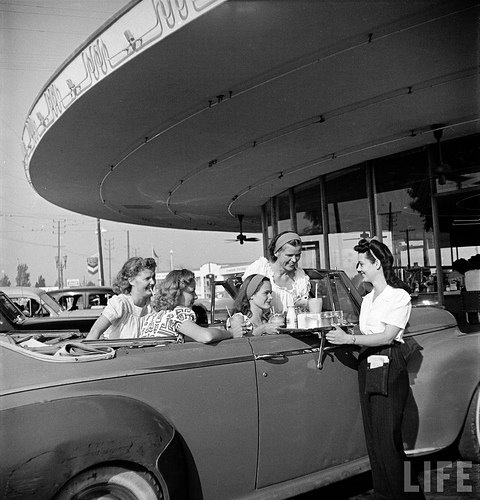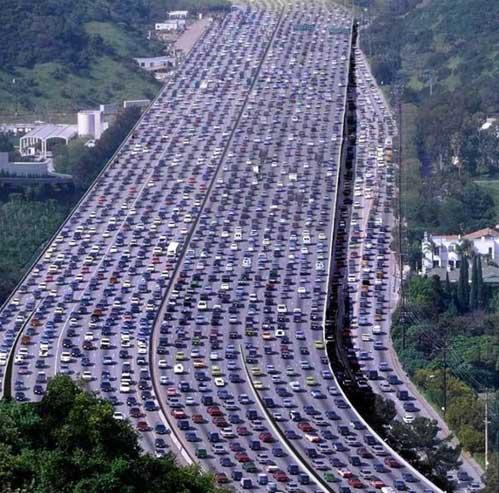EN2H9/EN3H9 On the Road to Collapse
Tutor & Convenor: Dr. Myka Tucker-Abramson
Seminar: Friday 12:30-2:30 - TERM 2
In The Long Twentieth-Century, Giovanni Arrighi argues that the history of global capitalism has been structured by four roughly 100-year “cycles of accumulation,” each underpinned by an imperial leader: first Genoa, followed by the Dutch, the British, and now the US. In each case, he argues the cycles have with remarkable consistency had three phases: a merchant phase followed by a phase of industrial expansion, and then of financialization, and in each case the shift from industry to finance has been a “sign of autumn,” heralding the empire’s decline. This module follows the rise and fall of the US cycle of accumulation through the genre of the road novel.
In 1956, the monumental Interstate Highway Act passed, punctuating the national craze for the car and the freeway. The 1950s saw a veritable explosion of road novels, movies and songs all of which cast the highway as a symbol of the freedom, mobility, prosperity, and possibility underpinning the American dream and American century. Sixty years later we are witnessing another explosion of road novels and movies: Cormac McCarthy's The Road, Rachel Kushner's The Flamethrowers, Mad Max: Fury Road, and Yuri Herera's Yuri Herrera's Signs Preceding the End of the World to name just a few. But unlike their precursors, the road no longer stands as a space of prosperity, futurity, and freedom, but has become a dystopic hell. The road leads nowhere. Its collapse, in other words, seems to stand for the collapse US global hegemony and its system of neoliberalism. This course suggests that the cultures of the highway might provide an ideal standpoint from which to consider the life and death of the affective, ecological, economic, political, and cultural regimes that composed US hegemony and neoliberalism. Drawing on novels and films, as well as economic, political, cultural, feminist, and critical-race and geographic theory, this course will consider the multiple meanings of the road novel, and what it might tell us about the roads we have already travelled and the possible roads ahead.
While many of our primary texts are popular novels and films, we will also be reading political economy, economic geography, and academic theory to ground our readings. As well, some of the readings – particularly Samuel Delany’s Dhalgren – are not only formally difficult, but also deal with sex and violence in challenging and potentially upsetting ways. Students who take this module should be prepared to work through these often dense, challenging, and theoretically complex texts.
Syllabus
The syllabus for can be viewed here
Class notes are available here.
Assessment (2019-20)
Intermediate Years: Class Presentation + handout (20%), 3500-word essay from list of given questions/topics (80%)
Final Years: Class Presentation + handout (20%), 4500 word essay developed with tutor approval (80%)
Presentation schedule is available here.
Presentation instructions are available here.
Essay instructions are available here.
Further Reading on the Road Novel
There are a many books that are about the road novel. They might be useful for you as you start to develop your own theories of what the road novel looks like, how it works, and what it means.
Ann Brigham American Road Narratives: Reimagining Mobility in Literature and Film (2015)
Roger Casey Textual Vehicles: Automobiles in American Literature (1997)
Deborah Clarke Driving Women: Fiction and Automobile Culture in Twentieth-Century America (2007)
Michael Denning "Migrant Narratives" The Cultural Front: The Laboring of American Culture (1997)
Cynthia Golomb Dettelbach In the Driver's Seat: The Automobile in American Literature and Popular Culture (1976)
Kris Lackey Road Frames: The American Highway Narrative (1997)
David Laderman Driving Visions: Exploring the Road Movie (2002)
Stephanie LeMenager "The Aesthetics of Petroleum" Living Oil: Petroleum Culture in the American Century (2016)
David Lewis (ed) The Automobile and American Culture (1983)
Katie Mills The Road Story and the Rebel: Moving Through Film, Fiction, and Television (2006)
Ronald Primeau Romance of the Road: The Literature of the American Highway (1996)
Inna Rae Hark and Stephen Cohan, eds. The Road Movie Book (1997)
Cotten Seilier Republic of Drivers: A Cultural History of Automobility in America (2008)
Rowland Sherrill Road-Book America: Contemporary Culture and the New Picaresque (2000)
Janis Stout The Journey Narrative in American Literature: Patterns and Departures (1983)
An incomplete list of alternative road novels
There are numerous road novels and this syllabus could have been re-written in countless ways. Below are a few of the many novels that could have been on the syllabus and that you might find useful to draw on for your essay. There are also countless films, movies, plays, and albums you could draw on, though they are not listed here.
Prelude: Earlier Road Novels
Ilya Ehrenburg Life of the Automobile (1929)
William Faulkner Sanctuary (1936) and As I Lay Dying (1930)
Ilya Ilf Ilf & Petrov’s American Road Trip (1935)
Jack London The Road (1907)
Ben Reitman Sister of the Road: The Autobiography of Boxcar Bertha
John Steinbeck Grapes of Wrath (1939)
Jim Tully Beggars of Life (1924)
Part 1: Production / Keynesianism / Expansion / 1950s and 1960s
William Burroughs Naked Lunch (1957)
William Faulkner Intruder in the Dust (1957)
Vladimir Nabokov Lolita (1956)
John Updike Rabbit, Run (1960)
Tom Wolfe The Electric Kool-Aid Acid Test (1968)
Part 2: Circulation / Neoliberalism / Crisis / 1970s and 1980s
JG Ballard Concrete Island (1974)
Octavia Butler Mind of My Mind (1977)
Joan Didion Play it as It Lays (1970)
Robert Pirsig Zen and the Art of Motorcycle Maintenance (1974)
David Seals The Powwow Highway (1983)
Hunter S Thompson Fear and Loathing in Los Angeles (1971)
Douglas Woolf Wall to Wall (1992)
Rudolph Wurlitzer Nog (1968)
Part 3: Circulation Pt 2 / Neoliberalism with a Human Face / 1990s and 200os
Roberto Bolaño Savage Detectives (1998)
Octavia Butler Parable of the Sower (1993) and Parable of the Talents (1998)
María Amparo Escandón Gonzalez and Daughter Trucking Co.: A Road Novel with Literary Licesnse (2005)
Cynthia Kadohata In the Heart of the Valley of Love (1992) and The Floating World (1993)
Chris Krauss I Love Dick (1997) and Torpor (2006)
Pagan Kennedy Spinsters (1995)
Erika Lopez Flaming Iguanas (1997)
Karen Tei Yamashita Tropic of Orange (1997)
Part 4: Crisis / Collapse / post -2008
Roberto Bolaño The Savage Detectives (2008)
Hari Kunzru White Tears (2018)
Chris Krauss Summer of Hate (2010)
Rachel Kushner Flamethrowers (2013) and Mars Room (2018)
Elly Lonan Amongst the Liberal Elite: The Road Trip Exploring Societal Inequalities Solidified by Trump (2018)
Valeria Luiselli Lost Children Archive (2019)
Cormac McCarthy The Road (2010)
Alia Trabucco Zerán The Remainder (2019)



